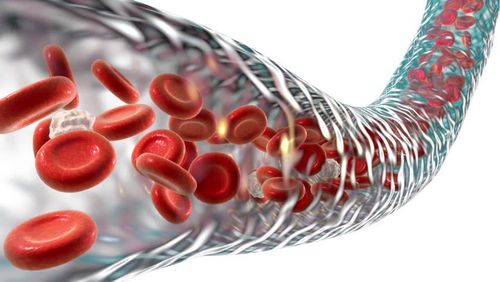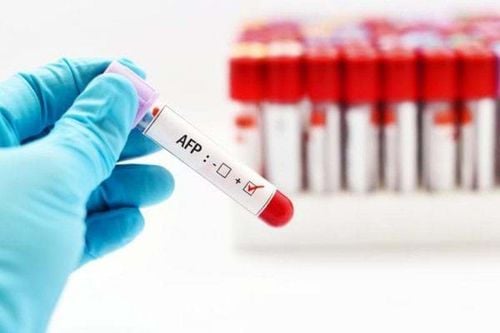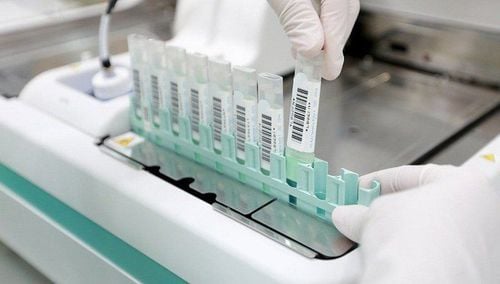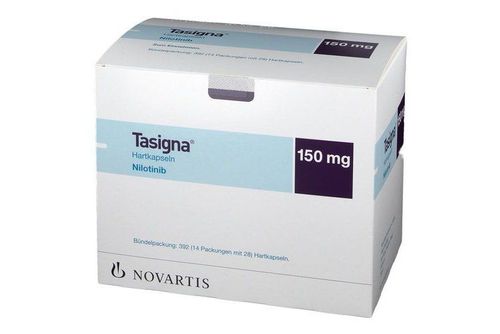This is an automatically translated article.
A complete blood test is one of the most basic tests to assess an individual's general health as well as to aid in the diagnosis of clinical diseases. In the analysis results sheet, the complete blood count test provides a comprehensive observation, classification and statistics of the blood cells circulating in the body's blood vessels.1. What is a whole blood test?
Although it has no definite shape or structure, the blood is still considered an organ and belongs to the circulatory system. The connection of all organs in the body is due to the presence of blood. Indeed, the role of blood is to bring oxygen and nutrients along the arterial flow to each cell; and at the same time capture carbon dioxide and waste products from the intracellular metabolism by venous flow back to the heart. Not only that, blood cells are also responsible for the immune function against infectious agents and blood clotting, avoiding continuous bleeding that causes blood loss. In other words, if the blood is sick, it will be difficult for other organ systems to remain unaffected.
The two components that make up blood are blood cells and plasma. Accordingly, the complete blood count test is meant to provide information after examining the types of blood cells on the characteristics of the number, size, and morphology of red blood cells, white blood cells and platelets. In contrast, plasma composition tests help measure the soluble biochemicals circulating in the blood stream.
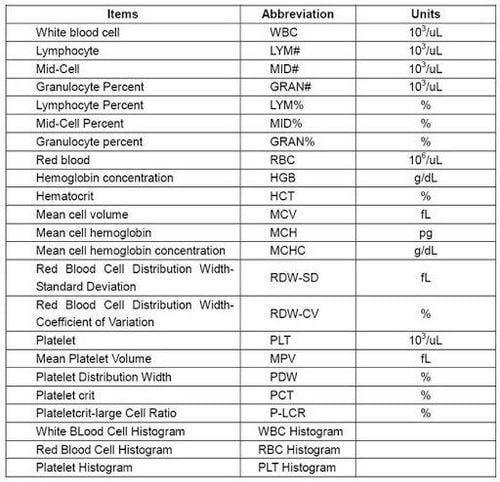
Xét nghiệm máu toàn bộ giúp đánh giá trình trạng sức khỏe của bệnh nhân
2. When should a complete blood test be performed?
Since this is the basic laboratory, a complete blood test is very often ordered for the following reasons:
Assess your general health : Even if there is no disease, at each visit For routine health, your doctor will order a complete blood count as a mandatory standard of routine medical check-ups, thereby to monitor your general health and screen for a variety of diseases. Various disorders on blood cell lines, such as anemia or leukemia. Diagnosing Disease or Unusual Medical Condition: When you visit your doctor because of fatigue, weakness, fever, inflammation, bruising or spontaneous bleeding, a complete blood count test can help diagnose diagnose the cause of these signs and symptoms. From there, the doctor can diagnose and give appropriate treatment methods. Monitoring the progression of a disease: With a complicated and unpredictable disease, the blood count results will be a tool to assist the doctor in monitoring the disease, assessing the response to treatment, and adjusting the blood count. regimen as well as to prevent possible complications. Identify the indications for blood transfusion: When the body has an acute blood loss due to trauma, accident, gastrointestinal bleeding or the body is anemic due to the inability to produce it on its own in myelosuppression, blood cancer, you can may need to replenish blood at least enough organ systems to ensure their function. The most common indication for blood transfusion in clinical practice is the transfusion of erythrocytes, especially when massive bleeding affects hemodynamics.

Xét nghiệm máu khi khám sức khỏe tổng quát
3. What is the clinical significance of the whole blood test?
The clinical significance of whole blood testing in an adult adult will be analyzed according to the following specific blood cell lines:
3.1. Red blood cell line The red blood cell line contains the most important parameters in a blood count result because these cells are most abundant and perform the main function of the blood.
Red blood cell count, hemoglobin, and hematocrit are lineage-specific indicators of red blood cells and are closely related. This is the type of cell that regulates the red color of the blood and has the main function of transporting oxygen from the lungs to each cell to perform metabolism and receive carbon dioxide to be discharged into the lungs. So if blood is taken from an artery, the blood will be bright red because it is oxygen-rich blood. Conversely, if blood is taken from a vein, the blood will be dark red because it is oxygen-poor blood.
Red blood cell count: Male: 4.35-5.65 trillion cells/L (4.32-5.72 million cells/mcL). Female: 3.92-5.13 trillion cells/L (3.90-5.03 million cells/mcL). Hemoglobin: Male: 13.2-16.6 grams/dL (132-166 grams/L). Female: 11.6-15 grams/dL (116-150 grams/L) Hematocrit: Male: 38.3-48.6%. Female: 35.5-44.9%
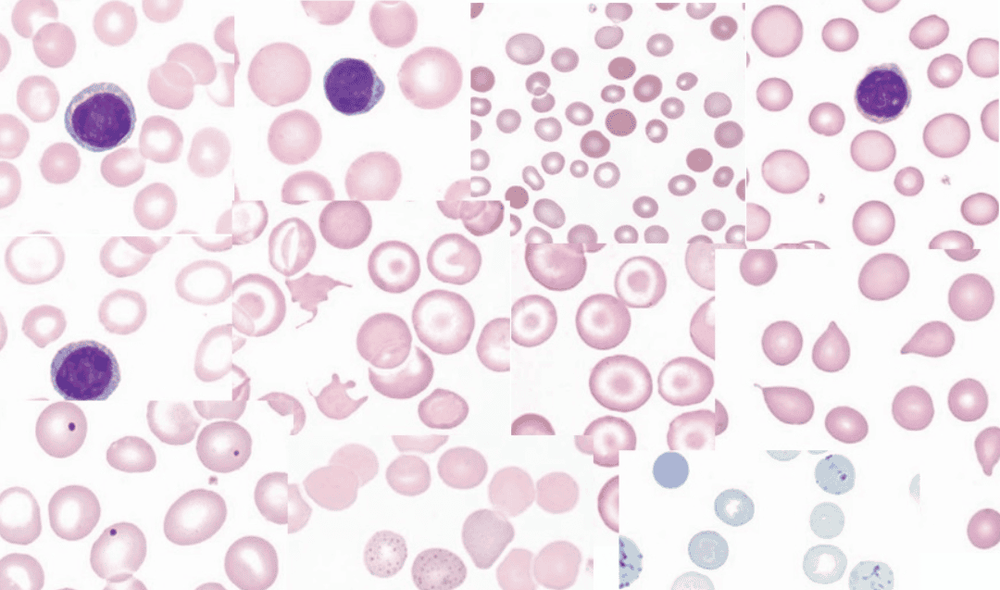
Tế bào hồng cầu
If one of the above parameters or all three are lower than normal, the patient will be diagnosed with anemia. Chronic anemia causes fatigue, weakness and is most commonly caused by iron deficiency. Acute anemia often occurs due to trauma, gastrointestinal bleeding... The doctor will need further tests to find the cause of the anemia and prescribe appropriate treatment.
On the contrary, if the red blood cell count is higher than normal or both hemoglobin or hematocrit levels are high, this may suggest an underlying medical condition, such as polycythemia vera or congenital heart disease, chronic lung disease.
3.2. White blood cells Unlike red blood cells, white blood cells are composed of blood cells that are colorless, almost transparent, and are difficult to see under a microscope without chemical staining. matter. These are cells involved in the immune system, protecting the body from bacterial invasion.
White blood cell count: 3.4-9.6 billion cells/L (3,400 to 9,600 cells/mcL)
If the test results show that the patient's white blood cell count is higher than normal, the patient has If you have an infection or inflammation, your doctor will consider antibiotics. However, if the patient has absolutely no signs of infection in any organs, but the white blood cell count is very high, it should be suspected of immune system disorders, malignancies on blood cells. or bone marrow disease. In addition, a high white blood cell count has been reported as a response to certain medications.
Even so, a low white blood cell count is still considered a medical condition and requires monitoring, such as autoimmune disorders that destroy white blood cells, bone marrow problems, or cancer. letters. Certain medications can also inhibit white blood cell production. In these situations, the body will not be able to resist environmental pathogens due to a shortage of white blood cells. When the infection is severe, the indication for a white blood cell transfusion should also sometimes be considered.
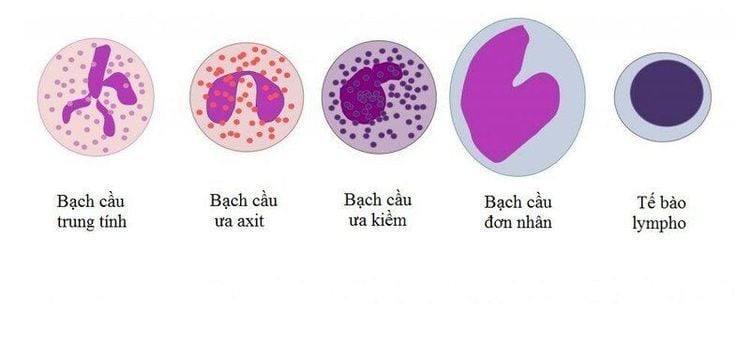
Các loại tế bào bạch cầu
3.3. Platelet cell line Very different from the red blood cell line and the white blood cell line, platelets are not an actual blood cell but a fragment of a very large cell, called a specimen. Platelet. These are cells located in the bone marrow instead of circulating in the blood vessels like other blood cells. The function of platelets is to participate in the initial hemostasis process. When the vessel wall is broken, the platelets immediately come to stick, forming a stopper, helping the blood to stay in the vessel.
Platelet count: Male: 135-317 billion/L (135,000 to 317,000/mcL). Female: 157-371 billion/L (157,000-371,000/mcL).
Accordingly, if the platelet count is lower than normal, the initial hemostatic function is no longer guaranteed, you will be at risk of spontaneous bleeding or bleeding that is difficult to stop. Thrombocytopenia is often a consequence of viral infections, especially dengue fever. Certain medications can also affect the number and function of platelets. Therefore, when patients take these drugs, a complete blood test is also a necessity to monitor the disease. However, if long-term thrombocytopenia is suspected, chronic diseases such as cirrhosis, myelosuppression or blood cancers should be suspected that inhibit platelet production. In contrast, if the platelet count is higher than normal, often due to primary disorders in bone marrow hematopoiesis, the risk of vascular occlusion and intravascular thrombosis is increased. At this point, the patient should consider taking antiplatelet drugs.
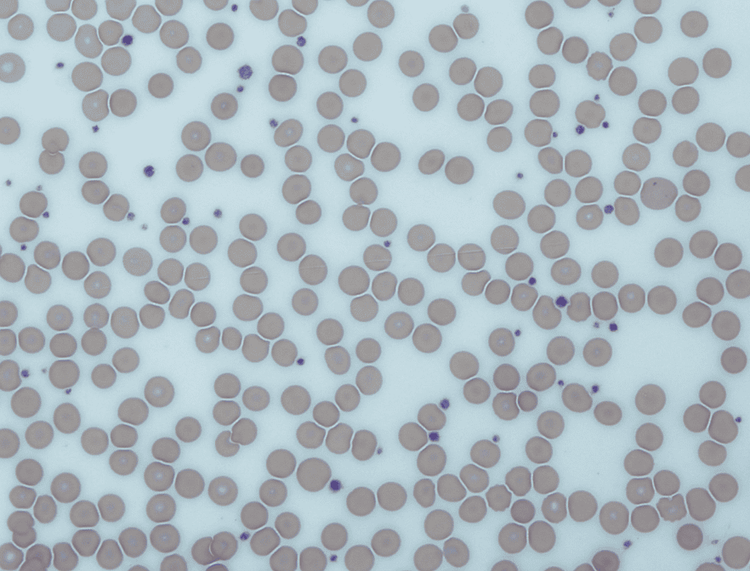
Hình ảnh tế bào tiểu cầu
In summary, a complete blood test provides a general overview of the status of circulating blood cells. Thanks to that, the doctor can assess your overall health as well as detect many diseases, and direct additional tests to confirm the diagnosis. Therefore, regular check-ups and complete blood tests are a practical act of health concern for you and your loved ones.
Reference source: webmd.com; mayoclinic.org
Recommended video:
Periodic health check at Vinmec: Protect yourself before it's too late!
SEE ALSO:
In what case is the white blood cell reduced? Are low platelets dangerous? How many red blood cells in the body?




